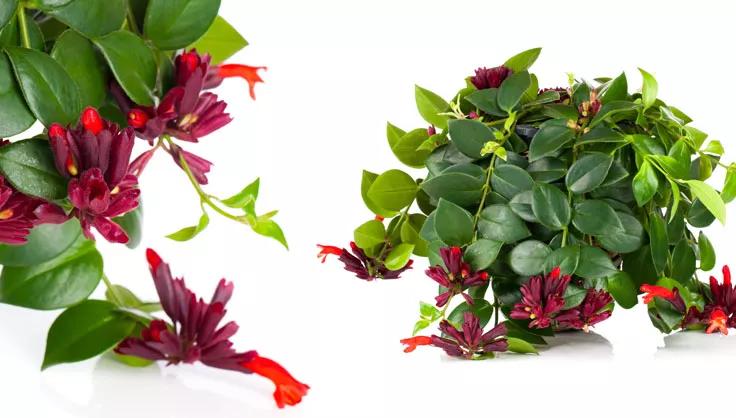How to Care for Lipstick Plants

Choosing Your Lipstick Plant
For beginners, the Aeschynanthus radicans is a great choice due to its hardiness and ease of care. If you’re looking for something with a little more drama, the ‘Rasta’ with its curly leaves or the ‘Black Pagoda’ with its strikingly patterned foliage might be more up your alley.
The Lipstick Plant comes in various colors and varieties. Some popular ones include the Aeschynanthus radicans with its bright red flowers, and Aeschynanthus lobbianus with more elongated blooms. These plants add a splash of vivid color to any indoor setting and are particularly eye-catching when they flower.
How to Care for Lipstick Plants
Light
Lipstick Plants thrive in bright, indirect light. They can tolerate some direct morning sunlight but should be protected from harsh afternoon rays. A spot near an east or west-facing window would be ideal.
Soil
A well-draining, peat-based potting mix is perfect for Lipstick Plants. You can also add perlite or orchid bark to regular potting soil to improve drainage and mimic their natural epiphytic growing conditions.
Fertilizer
Feed your Lipstick Plant with a balanced, water-soluble fertilizer every 2-4 weeks during the growing season (spring and summer). In winter, reduce feeding to every 6-8 weeks.
Watering
Water when the top inch of the soil feels dry. Lipstick Plants prefer consistent moisture but don’t like to sit in water. Reduce watering in winter when the plant isn’t actively growing.
Pruning
Pruning can help maintain a bushy, full appearance and encourage more blooms. After flowering, trim back the stems to promote new growth and flowering.
Repotting
Repot your Lipstick Plant every 2-3 years, or when it becomes root-bound. Spring is the best time to repot, giving the plant time to establish in its new pot before the growth spurt of summer.
Propagation
Propagating Lipstick Plants is relatively easy. You can take stem cuttings, place them in water or moist soil, and they will root in a few weeks.
Common Problems with Lipstick Plants
Pests and Diseases
Be on the lookout for aphids, spider mites, and mealybugs. Regular inspection and immediate treatment with insecticidal soap or neem oil can control these pests. Overwatering can lead to root rot, so ensure your potting mix is well-draining.
Toxicity
Lipstick Plants are non-toxic to pets and humans, making them a safe and beautiful addition to any home.
Lipstick Plant FAQs
Why are my Lipstick Plant’s leaves turning yellow?
Yellow leaves can be a sign of overwatering, underwatering, or insufficient light. Check your watering routine and ensure your plant is getting enough light.
How often do Lipstick Plants flower?
With proper care, Lipstick Plants can flower multiple times a year, especially in spring and summer. Ensure they receive adequate light and the right amount of fertilizer.
Can Lipstick Plants be grown outdoors?
In warmer climates, Lipstick Plants can thrive outdoors in a shaded or partially shaded area. However, they should be brought indoors when temperatures drop.
Caring for a Lipstick Plant is a rewarding experience that brings a tropical flair to your indoor garden. With their unique blooms and easy-care nature, they're perfect for gardeners of all abilities.
Print this Article:
Get the Dirt
Stay up to date on new articles and advice. Please fill out the information below.
